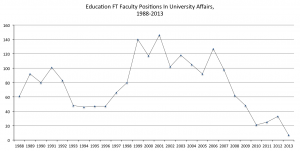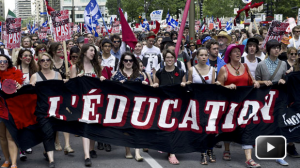The University of British Columbia is renowned for its lack of accountability and transparency in budget practices. This past year, with sustained failures of accountability and transparency since President Gupta’s resignation in August, the handling of UBC’s budget has reached a new bottom.
Early last week, VP Finance Simpson assembled the Deans and Directors of Finance from each Faculty to present their budgets. The optics are that they played patty-cake over the budget for two days. President Piper is on record commenting that the ‘presentations were excellent’. Yes, many of the Faculties’ budgets are a mess—in perennial deficit– but the PowerPoint slides the Deans presented are a thing of beauty. So that’s where we’re at here at UBC.
Yes, the administrators all get a trophy for participating. Is this not the ‘pampered Dean syndrome’?
In the meantime, too messed (tuum est, eh?) is the budget that in December President Piper rushed the Board of Governors to once again approve international student tuition increases across the Faculties, e.g.:
- An increase in tuition for new incoming international students effective May 1, 2016 and for the two succeeding academic years:
- (a) International undergraduate students (including baccalaureate and post baccalaureate programs):
- 15% increase for all programs (listed in Appendix A), except the Bachelor of Education (0% increase) and the Bachelor of Commerce (23.5% increase) for 2016-2017 and 2017-2018.
- A range of increases from 0% to 15%, as specified in Appendix A, for 2018-2019.
- (b) Non-thesis-based international graduate students:
- A range of increases from 3% to 100%, for programs specified in Appendix A, for 2016-2017.
The PPT slides are a thing of beauty.
Meantime, administrative bloat continues unabated at UBC. Some of the administrators, with their Faculties in deficit, walked out of last week’s budget meeting with the President’s and VP Finance’s approval to hire, yes, more administrators.
Meanwhile, graduate student funding has stagnated; internal graduate funding in some Faculties has not increased for 15 years. Departments have been starved for FT faculty hires and postdocs face an increasingly bleak academic job market.
Meantime, agencies of budget accountability and transparency at UBC, such as the Council of Senates’ Budget Committee, have been reduced to attendants of minutiae. In September, the Budget “Committee Chair noted that the Committee’s formal mandate to advise the President on the University budget, but that it now tended for focus on areas of particular interest to its members, such as the new Student Information System.”
Such is the state of UBC’s budget accountability and transparency. Please, someone has to hold these Deans to account for their budgets.
Oh yea, almost forgot again, happy new year + #100!

 Follow
Follow



